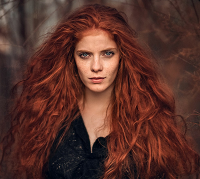Naiya is looking to start breeding animals, however I have been hard pressed to find any detailed information about the Zibri that the Drykas cultivate. So I have a couple (or more) questions.
Generally speaking, what does a Zibri look like? Is it similar to a buffalo, or more like an alpaca?
When do Zibri come into rut? What are the gestation periods? Are they likely to have twin, or single births?
How much milk do they produce? Can they be milked after weaning? At what age can they be weaned?
How intelligent is a Zibri? Can they be trained? Generally speaking, what are their temperaments?
How often can they be shaved for wool?
How long do they live? When do they become mature? When can they safely be bred?
- Getting Started
- Help
- Master Lists
- Useful Links
- Features
Drykas and Zibri
(This is a thread from Mizahar's fantasy roleplay forums. Why don't you register today? This message is not shown when you are logged in. Come roleplay with us, it's fun!)Moderators: Liaisons, Assistant Storytellers, Regional Storytellers, Domain Storytellers
2 posts • Page 1 of 1
-

Naiya - Player
- Posts: 1023
- Words: 766506
- Joined roleplay: June 14th, 2013, 5:11 pm
- Race: Human, Drykas
- Character sheet
- Storyteller secrets
- Scrapbook
- Plotnotes
- Medals: 2
-


Drykas and Zibri
Thoughts
Snake-Tongue
Common
Snake-Tongue
Common
-

Ayszel - Taint is in the air
- Posts: 169
- Words: 154389
- Joined roleplay: August 24th, 2014, 4:36 am
- Race: Dhani
- Character sheet
- Storyteller secrets
- Journal
- Plotnotes
2 posts • Page 1 of 1
Who is online
Users browsing this forum: No registered users and 0 guests

